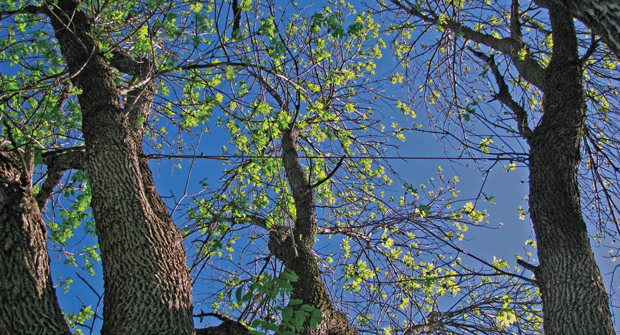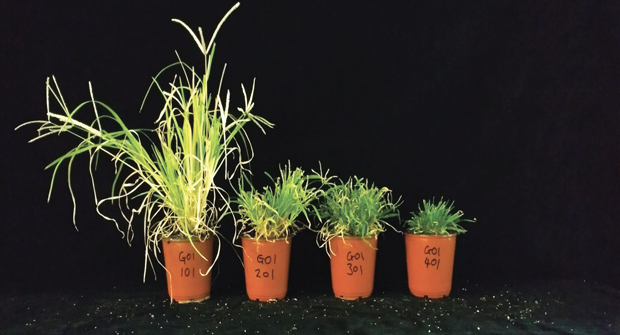Here’s a scenario: You look closely at a tree on one of the properties you manage, and intuitively, you think something is wrong or could easily go wrong. Maybe you even back away slowly, as the tree just looks weak and troublesome. At this point, the thought of cabling or bracing enters your mind to improve the look and safety of the tree. These are good thoughts and are in the best interest of the client.
Cabling reduces the likelihood of tree branches with bark/branch inclusions separating from each other and helps stabilize weak branch attachments through the installation of hardware. It can be a valuable procedure for creating increased structural support in the short term.
It can also be used for slightly extended branches and situations where the central leader has suffered storm damage and no longer exists, but several scaffold limbs are weakly attached. However, cabling is generally recommended only on a temporary basis.
Cabling, bracing defined
So, what is cabling, and how does it differ from bracing? Cabling involves placing thick, wound wire/cables two-thirds of the way up the tree’s height in the canopy. Bracing involves the placement of thick metal rods about 2-4 feet above the weak branch unions.
This work must be done by an ISA-certified arborist with extensive experience and proper equipment. It’s not a job for a homeowner or a non-professional; if you see an attempt to stabilize poor branch angles and included wood, it’s best to inform the property owner of their responsibility to hire a certified arborist to investigate and remediate.
Why is it a short-term fix?
Cables and braces are needed when branches are arranged such that the conductive vessels of one branch are being compressed by an adjacent branch (whose vessels are also being compressed). This type of water/nutrient movement reduction is best limited to a year or two in order to keep a tree in good health.
Once sufficiently weakened, the potential for branch separation — aka failure — increases dramatically. As time passes and weight and leverage are incrementally added, the hardware’s capacity to stabilize the branches is increasingly reduced.
If a canopy has weakly attached or poorly angled branches without branch inclusions, cabling hardware can remain in a tree longer. However, a certified arborist must inspect the tree yearly to determine whether sufficient support exists for it to remain in the landscape without posing an unacceptable risk to the client or passersby.
Where to do it
Cabling and bracing can be done in any part of the landscape but is especially appropriate for high-visibility and target-rich environments where people and valuable property items are frequently present. Examples of these sites include shopping malls, post offices, HOA clubhouses, churches, schools, golf course practice greens, rest area picnic grounds, sports field spectator bleachers, children’s playgrounds and residential landscapes with patios and gazebos. Rural cemeteries and acreage windbreaks are locations where cabling and bracing are not likely to be worth the investment.
In addition to target-rich spaces, high-value trees that are underplanted in a particular region, memorial trees planted to honor a philanthropic or generous donor to a public place and sentimental trees that have special meaning to a particular family are often considered worth the time and effort. When assessing the site for possible cabling/bracing installation, interviews or listening sessions with the client are essential.
Pros and cons
These procedures have pros and cons. On the plus side, the most notable of those is making weak trees stronger and preventing a fatal accident or destruction of an important building.
Unfortunately, installing cables and braces draws unwanted attention to a hazardous situation. This hardware often provides a false sense of security, a feeling that the tree is safer or more stabilized than it really is. The bottom line is that it’s important to thoroughly assess the site, the degree of instability of the tree and the potential for harm to occur if no action is taken.
Alternatives to cabling
If the time, expense and effort of cabling or bracing aren’t an option, there are at least two alternatives to hardware installation.
First, cut off one of the co-dominant branches in a V-shaped arrangement, if possible. This often creates a large wound that may not close and leads to heartwood decay but could extend the tree’s life by five or six years instead of the one or two associated with hardware installation. It could also leave a void in the canopy, which the client may not like. In each following year, the tree should be inspected by a certified arborist to determine if additional pruning is necessary to keep the tree stable and eliminate weak stems that grew in response to the branch removal.
Second, you can simply cut the tree down and remove it from the landscape if spending the money to cable/brace or prune off a branch is not feasible. This eliminates the problem and related liability completely. While this option is usually not popular in the short term, it allows for the establishment of a sturdy replacement that will provide long-term benefits instead of hanging on to the vestige of a formerly beneficial specimen.


